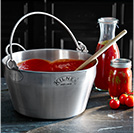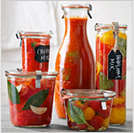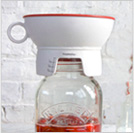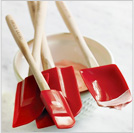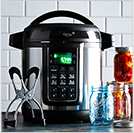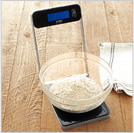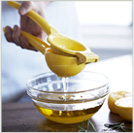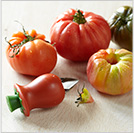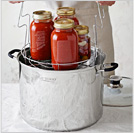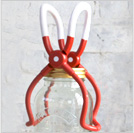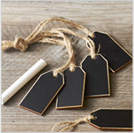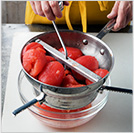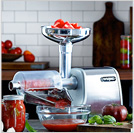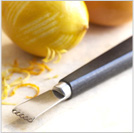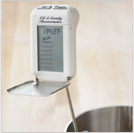These specially designed wide pans are ideal for cooking down fruits to your desired consistency. They should have a large capacity (about 8 quarts) and be made of nonreactive metal.
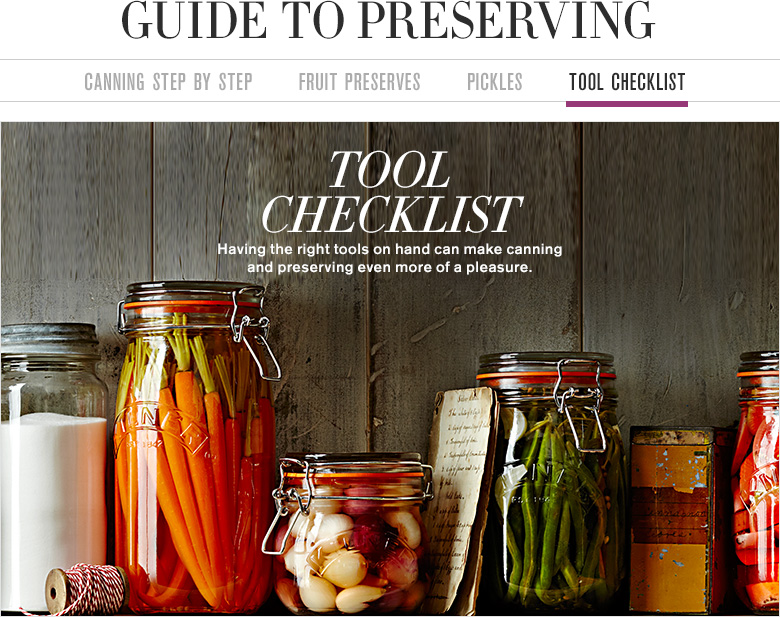
For safety, use glass jars specifically designed for canning. They come in a variety of styles and sizes and, in good condition, can be used repeatedly. Jars should be sturdy enough to stand up to high temperatures.
Widemouthed funnels are ideal for filling preserve jars quickly and easily with minimal spilling.
A nonmetallic, heatproof spatula is useful for stirring preserves, and a thin spatula is helpful for releasing air bubbles around the inside edge of filled jars.
Take the guesswork out of preserving with an automatic system that controls processing time and temperature with precision.
It is important to use precise quantities when you're canning, which is why recipes often list ingredients by weight rather than volume. A scale ensures accurate amounts of each ingredient.
Many preserve recipes use citrus juice as the acid component. Use a juicer to extract juice from all sorts of citrus quickly and easily.
These tools can save valuable time when you're working with fresh fruits like cherries and mangoes that are labor intensive to pit and core.
A large pot with a removable metal rack makes it easy to can in large batches. Choose one deep enough so that water will cover your filled jars by at least 2 inches.
Also known as a jar lifter, this tool is essential for safely lifting filled preserve jars in and out of a hot-water bath.
It is a good idea to label your homemade jams and pickles, with both the jars' contents and the date you made them, since many varieties can look similar from the outside.
These tools quickly puree fruits and vegetables to your desired texture for preserving.
This electric press makes fast, easy work of turning a bounty of fresh tomatoes into a flavorful puree for canning.
For jelly-making, a fine-mesh sieve or strainer is helpful for clarifying fruit mixtures by removing the solids.
A zester is ideal for stripping off citrus peel, often used in preserving recipes because it adds flavor and contains pectin, which helps liquids to jell.
A thermometer is especially helpful for beginning jam makers and essential for recipes that require processing jars at a specific temperature for an extended period.









